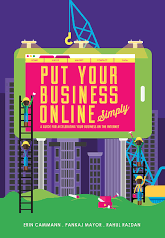How the Changing Landscape of Online Payment Systems Affects Small Businesses What SMBs need to know

Many small businesses depend on the ability to accept in-store, online, and mobile credit card payments. What few businesses realize, however, is that the POS systems they employ to do so often come with steep or hidden fees that can severely impact a SMB's bottom line.
The world of credit card payments is a complicated one, and faces the increasing reliance on payments made by smartphones. In 2012, Americans used credit cards or debit cards to pay for two-thirds of all transactions. Of those sales, some 200 million transactions were made via smartphone, a number that is expected to increase to 384 million by the end of 2015.
The bottom line? Small businesses must be equipped to accept mobile credit card payments (Check out the deep study Best Mobile Credit Card Processing: Square vs. PayPal vs. Intuit).
One of the most popular mobile POS systems on the market is Square, which a large number of small businesses use. Square provides a free credit card reader that can be plugged into Android or iOS devices, and serves as the general merchant processor. In other words, Square acts as the middleman that handles merchant bank responsibilities and credit card transactions, and routes credit card information to the proper payment networks and merchant accounts.
Business owners pay 2.75% per credit card swipe or 3.5% plus 15 cents per manually entered transaction. With Square there are no sign-up, activation, cancellation, or other fees.
There are a number of pros for using a payment system like Square, namely, small businesses have the ability to accept credit card payments, making it easier for customers to pay. This ease of payment ultimately helps small businesses sell more products.
Still, it's worth noting that there are things small business owners should be aware of, if they do choose to use a system like Square.
Create separate merchant accounts for e-commerce payments. Typically, fees for these are higher than in-store payments. If you account for both types of transactions together, you're often penalized with a higher fee because e-commerce transactions are riskier.
Payment from systems like Square can take as long as 30 days.
Some systems, including Square, are losing money because they have accumulated the highest risk pool of merchants.
Though Square's plug in device was once a game changer, now that it has been a few years since it was introduced, the hardware is no longer cutting edge.
Security can be an issue for many SMBs and their customers. It's important to understand how safe your POS device actually is before opting to use it.
If something goes wrong, does your POS offer good customer service? Square, for instance, has been criticized for lacking customer service options.
Again, these are all aspects of using mobile POS systems that small business owners should be aware of before they begin using one. One of the best ways to ensure smooth integration of your POS system is to create your SMB website using an online business platform, like Ocoos.
Ocoos integrates a number of payment options into its platform, and also offers a concierge to build a SMB's website. Plus, Ocoos features 24-hour, US-based customer service.


